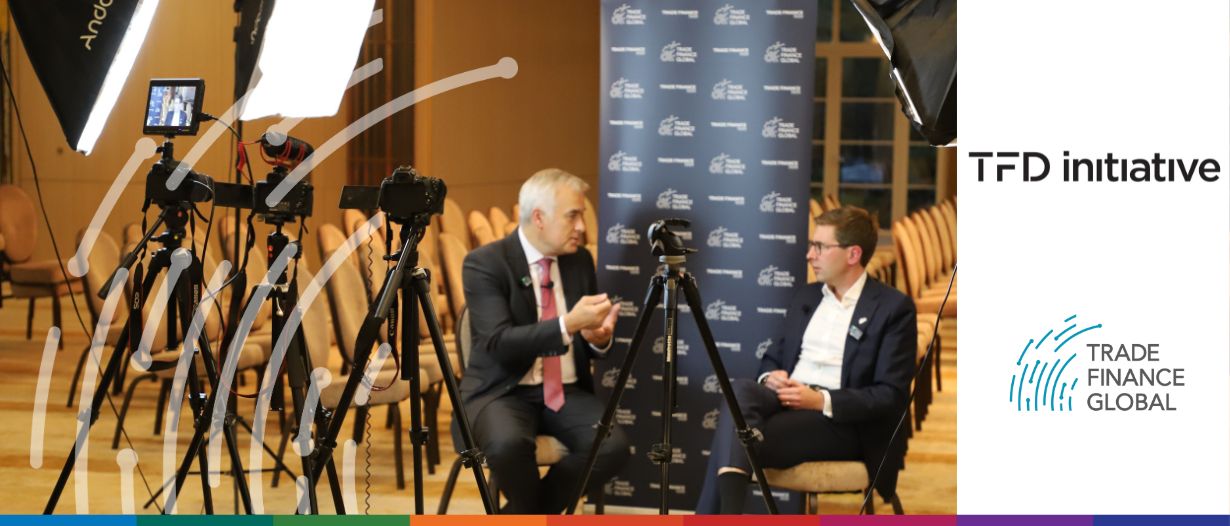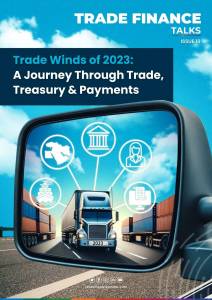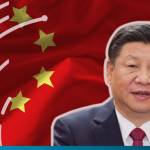Estimated reading time: 5 minutes
In July 2023, TFG Distribution Finance was launched to drive liquidity into the trade finance market, from institutional capital, banks, and credit funds, facilitated by TFG and its partners.
In doing so, TFG Distribution Finance can be used to identify and address unmet demands in the trade finance market, working towards closing the $2.5 trillion trade finance gap – a significant barrier to international trade impacting mid-market companies and small to medium-sized businesses (SMEs) in particular.
TFG Distribution Finance works with global banks as well as traditional institutional investors, non-bank lenders, and alternative credit funds to participate in the trade finance market.
Through the introduction of new sources of structured capital into the market, TFG Distribution Finance seeks to increase available liquidity and service the unmet demand for private credit from companies on TFG’s platform.
TFG has partnered with key stakeholders across the industry including Allianz Trade, Enigio, the International Trade Forfaiting Association’s (ITFA’s) DNI Initiative, and Sullivan.
In this fireside chat, Andre Casterman, CEO, TFD Initiative and Chairperson of the ITFA Fintech Committee, and Mark Abrams, MD, Trade and Receivables Finance, Trade Finance Global, sat down to discuss distribution and its growing importance at TFG, embodied by the TFG Distribution initiative.
Originators and their importance
Originators play a vital role in the industry, as they provide liquidity to end customers or clients. In traditional trade, originators are often banks. However, in sub-investment grade markets, factoring companies can also serve as originators.
Recently, new players have emerged in the lending market who aren’t traditional banks. Often referred to as “fintechs,” these entities don’t actually sell technology.
Instead, they focus on offering financial liquidity to SMEs. This has the effect of making supply chain finance more accessible to both mid-sized companies and SMEs.
Distribution and its importance for trade finance
Distribution plays a crucial role, especially for non-bank lenders who don’t have substantial balance sheets to fall back on. These lenders often rely on third parties and partners to provide the necessary funding. As Casterman put it, this is essentially a case of “funders funding the funders.”
In the area of distribution, originators obtain funding from various sources such as institutional investors, asset managers, and banks. Credit insurers are also involved in this sector, and typically assuming the credit risk.
Casterman said, “There is really strong collaboration in the distribution space, everyone can add value to transactions as they see fit”.
Perspective of capital markets, investors, and funders on the asset class
The additional element in this scenario is the involvement of capital markets and institutional investors.
Casterman said, “I heard about distribution and capital markets in 2011. The banks were really keen to start working with institutional investors, as they were feeling the impact of Basel would hit them sooner or later”
Now, we are on the verge of this becoming reality, as the Basel regulations will come into effect in 2025.
The issue here relates to alignment on the pricing side. Banks focus on investment grade corporates with a low yield on transactions, focussing on low-risk asset classes.
Occasionally, this leads to a misalignment in pricing due to the anticipations of institutional investors. Consequently, the market’s perspective has evolved from one centred on early adopters to one where institutional investors are showing interest in alternative lenders that focus on SMEs.
Evolution of TFG Distribution Finance
Launched in the summer of 2023, TFG Distribution Finance represents the evolution of TFG’s financing arm, focusing on onboarding additional liquidity providers and addressing the needs of different funders.
This approach acknowledges that one size does not fit all in terms of funding requirements, highlighting the importance of collaboration among various market participants.
Abrams said, “For the last nine years our sole aim on the financing side has been to onboard further liquidity providers. That could be banks, funds, alternative lenders; to work with them and map their risk criteria and do the same, on the SME, corporate, FI side, and just introduce both parties”.
However, in the past two years, TFG has seen a change in the market from both the lending and borrowing side.
Abrams said, “Large institutional funders may be interested in accessing the SME space, but for whatever reason will just not be equipped to originate and hold those assets. So, we saw a real need to step into this space and actually service, hold, build books of assets, for those different funders”.
Abrams believes that working with technology providers and new capital providers presents a dynamic strategy to expand the business and address the $2.5 trillion trade finance gap, focusing on SMEs and the mid-market.
TFG Distribution Finance aims to evolve and bring in more market participants. Abrams said, “We want to do more than a proof of concept. We want to build different asset books and bring more funders into the market”.
Through education and information, TFG aims to broaden the understanding of asset books and enhance distribution.
Abrams said, “If you’re dealing with a small pool of actual institutional investors or banks, we’re never going to really close the gap. But by bringing in new funders, and educating and informing them, it will allow increased capacity to flow into the market”.











































